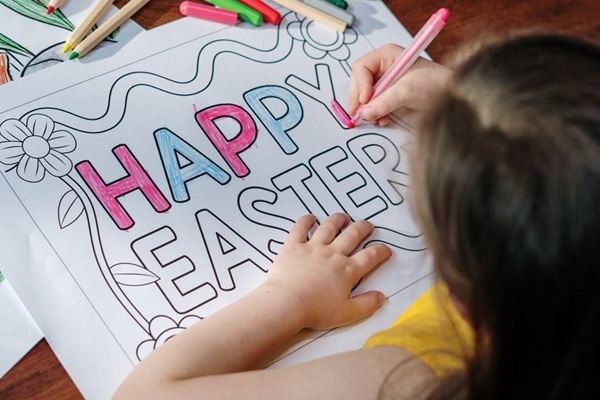Explaining the multi-layered, complex Easter story to children can be as simple as taking a cue from children’s movies.
“Kids get it, because we’ve told them fables, folk tales and even have Disney movies, which have death,” explains Melinda Shunk, children’s coordinator, Arkansas Conference of The United Methodist Church.
What do you think?
“It’s hard as grown ups to put our brains in the minds of children,” Shunk suggests. “Just bring the conversation further back without zeroing in on the details, particularly when answering questions.”
Asking this one question is a good starting place: “What do you think?”
The question has a three-fold benefit, Shunk explains.
In addition to encouraging a child to think harder about what she asked, it also shows respect for the child’s thoughts and opinions. Third, hearing the reply helps the adult understand what the child already knows and informs giving an age-appropriate response.
If the question is bounced back, it’s OK for the adult to answer, “I don’t know. Let’s talk about that.”
Additional resources
- "Celebrate Wonder Bible Storybook," ages infant to 1st grade
- "Growing In God's Love: A Story Bible," ages 4-8
- "Spark Story Bible," 2nd-4th grade
- "Children of God Storybook Bible," 2nd-4th grade
- "Kid's Spark NRSV Bible," 4th-6th grade
Admitting you don’t have the answer makes you human,” Shunk says, adding the response also models ongoing learning as a faith practice. Together, adults and kids may choose to read about Easter in an age-appropriate Bible (see list in sidebar).
Good Friday told in two sentences
Good Friday events, from the arrest to the pain and suffering and the eventual death, can be challenging to explain in kid-friendly terms.
“Good Friday is usually easy for children to understand if handled correctly because children understand when we use words they understand like ‘greedy leaders,’ ‘lies,’ ‘being treated unfairly,’ ‘pain’ and ‘sadness.’
“’Sin’ is a blanket word in ‘church speak’ that can be unrelatable to children,” she says.
Likewise, most children already are familiar with death, so adults should not try to omit that key event of the Easter story.
“Death has not been a secret to children as it is a part of life,” she points out. “They see nature dead, they have a pet who died, or, sadly, a person in their life who died.”
Where adults go off track is in oversharing.
“You don’t need to share the details of death. In a Disney movie, the scene goes dark and you then see the body lying still. We don’t need to see the nails hammered and the whipping. We can feel loss without the trauma,” Shunk points out.
Good Friday may be explained best in two sentences: Jesus dies. His disciples were sad.
“All of these are words that kids know,” Shunk says.
Just like Jesus said
Like with the events of Good Friday, adults may complicate the Resurrection, Shunk says, adding that Easter morning is simply about God keeping His promise, a concept that children easily understand.
“The Resurrection proves that God is God and what Jesus taught about God’s connection to us,” Shunk explains. “Kids are saying, ‘Oh, look! There He is! The tomb is empty! It happened just like Jesus said it would!’”
Crystal Caviness works for UMC.org at United Methodist Communications. Contact her by email or at 615-742-5138.
This story was published on March 16, 2021.
Melinda Shunk, children's coordinator with the Arkansas Conference of The United Methodist Church, is a trained educator from the University of Northern Colorado. She has worked in public education for seven years and children's ministry for 17 years. She and her husband have four children, ages 16-21. Shunks offers more tips here.





